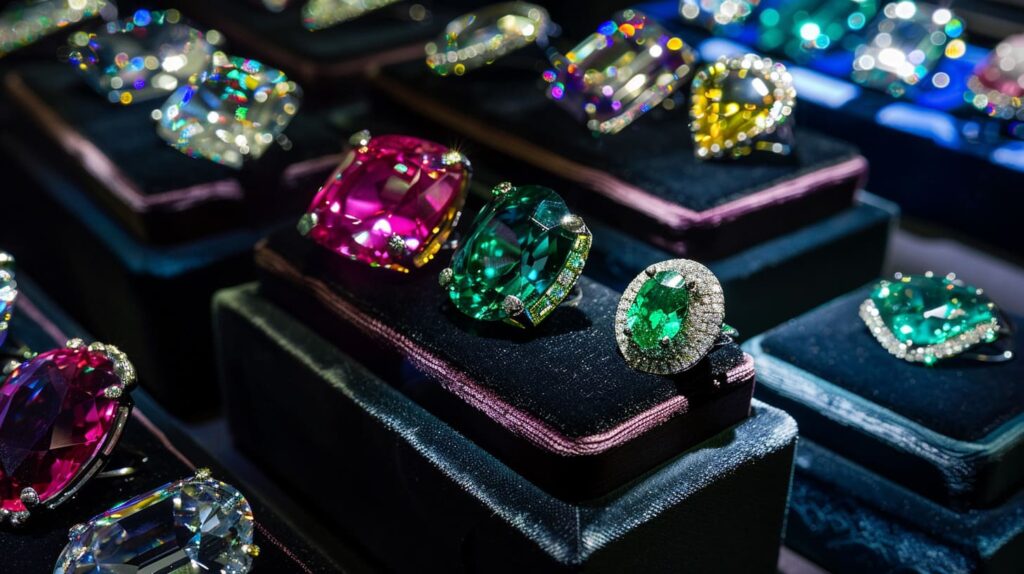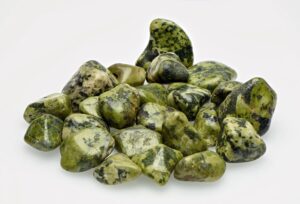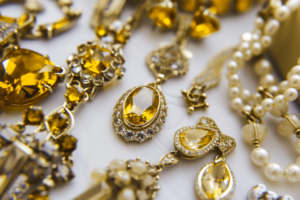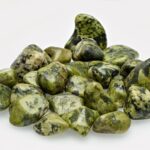Introduction to Precious Stones
Gemstones have always fascinated mankind with their beauty and rarity. They are used in jewelry, decorative objects and even in some esoteric practices. The value of these gems is influenced by several factors, the weight in grams being one of the main ones. In this article, we will explore in detail how the price per gram of gemstones is determined, analyzing the elements that impact their value on the market.
Factors that influence the price per gram of gemstones
Stone quality
The quality of a gemstone is one of the most decisive factors in its price. This quality is assessed on the basis of four main criteria, known as the “4 Cs”:
- Carat (Kilograms): The weight of the stone.
- Color: The purity and tone of the color.
- Clarity: The absence of inclusions and imperfections.
- Cut: The way the stone is cut.
Each of these aspects directly influences the stone’s value on the market. For example, a stone with high clarity and perfect cut can be worth significantly more than one of the same weight but with many inclusions.
Type of gemstone
There are several varieties of gemstones, each with its own unique characteristics and distinct value. Among the best known are:
- Diamonds: Recognized for their hardness and unparalleled brilliance, they are one of the most valuable stones.
- Rubies: Known for their intense red color.
- Sapphires: Popular for their varied colors, with blue being the most common.
- Emeralds: Valued for their deep, vibrant green.
Each type of stone has a base price that can vary enormously depending on its specific characteristics.
Origin of the stone
The origin of a gemstone can add significant value. Stones mined in renowned or historic locations tend to be valued more highly. For example, sapphires from Ceylon (Sri Lanka) and Colombian emeralds are highly rated on the market.
Treatments and enhancements
Many gemstones undergo treatments to improve their appearance and durability. These treatments can include heating, irradiation or the application of special oils. While some treatments are accepted and common, others can reduce the price per gram of gemstones, depending on the buyer’s perception of purity.
Calculating the price per gram of gemstones
Converting Kilograms to Grams
The price of gemstones is often expressed in carats, but can also be converted to grams to facilitate comparison with other precious materials, such as gold and silver. The conversion is simple: 1 carat equals 0.2 grams.
Calculation example
Suppose we have a high-quality diamond weighing 5 carats. If the price per carat is $10,000, the total price would be $50,000. Converting to grams, we have:
5 carats×0.2=1 gram5 \text{carats} \times 0.2 = 1 \text{ gram}5 carats×0.2=1 gram
Therefore, the price per gram would be $50,000.
Variations in the market
The gemstone market is dynamic, with prices that can vary significantly. These variations depend on economic factors, availability on the market, and trends in fashion and demand. It is essential to consult up-to-date and reliable sources to obtain accurate quotes.
Gostou do artigo? Saiba mais no nosso e-book O Guia Definitivo sobre Pedras Preciosas!
Gemstones: Value per gram
Reporting the value per gram of gemstones would be a bit complex, as the price varies significantly due to several factors:
Quality of the stone:
- Cut: Thecut of the stone, which determines symmetry, proportion and brilliance, greatly influences the value. A good cut maximizes the beauty of the stone, while a bad cut can significantly decrease its value.
- Color: The saturation, intensity and tone of the gemstone’s color also affect the price. Vibrant and rare colors are generally more expensive.
- Clarity: The presence of inclusions (imperfections) in the stone impacts its value. Stones with fewer inclusions are more valuable.
- Carat: The weight of the stone in carats is an important factor, but not the only one. A larger stone can be less valuable if it is inferior in other aspects.
- Origin: The origin of the gemstone can also influence the price. Stones from regions with a reputation for quality can be more expensive.
- Demand: The popularity and demand for a specific stone also affects its value. More desired stones generally command higher prices.
Place of purchase:
- Stores: Physical and onlinestores generally have higher prices due to operating costs and profit.
- Cutters: Buying directly from cutters can be more advantageous, as prices can be lower.
- Auctions and online marketplaces: It is possible to find more affordable gemstones at auctions and online marketplaces, but it is important to have the knowledge to assess the quality and authenticity of the stones.
Other considerations:
- Treatments: Some gemstones are treated to improve their color, clarity or appearance. This can affect the value of the stone, and it’s important to know if the stone has been treated and what type of treatment it is.
- Certificates: Gemstones with certificates of authenticity from renowned gemological laboratories generally have higher prices, but they guarantee the quality and origin of the stone.
Price Variation of 20 Common Gemstones (per gram)
Presenting the price variation per gram of gemstones in a comprehensive and precise way in a single space is unfeasible, due to the large amount of information and the complex nature of the gemstone market.
However, to help you understand the wide range of prices that each stone can have, we have prepared a detailed guide with examples of price variation for 20 common gemstones, as well as factors that significantly influence these values:
1. Diamond:
- Rough: R$50 to R$5,000 per gram
- Influencing factors: Cut quality, color, clarity, carat, origin, demand.
- Cut: R$ 1,000 to R$ 30,000,000 per gram
- Influencing factors: Cut quality, color (colorless, yellow, pink, blue, etc.), clarity, carat, origin, certification, brand, jewel design.
2. Emerald:
- Rough: R$100 to R$10,000 per gram
- Influencing factors: Place of origin, geological characteristics, cutting potential, transparency, color, inclusions.
- Cut: R$ 500 to R$ 1,000,000 per gram
- Influencing factors: Cutting quality, color (intense bluish-green), clarity, size, origin, certification, brand, jewel design.
3. Sapphire:
- Rough: R$200 to R$20,000 per gram
- Influencing factors: Place of origin, geological characteristics, polishing potential, transparency, color, inclusions.
- Cut: R$ 1,000 to R$ 2,000,000 per gram
- Influencing factors: Cutting quality, color (blue, yellow, pink, green, etc.), clarity, size, origin, certification, brand, jewel design.
4. Ruby:
- Rough: R$500 to R$50,000 per gram
- Influencing factors: Place of origin, geological characteristics, polishing potential, transparency, color (deep red), inclusions.
- Cut: R$ 2,000 to R$ 10,000,000 per gram
- Influencing factors: Cutting quality, color (pigeon blood red), clarity, size, origin, certification, brand, jewel design.
5. Turquoise:
- Rough: R$100 to R$5,000 per gram
- Influencing factors: Place of origin, geological characteristics, color (intense turquoise), inclusions, matrix (host rock).
- Cut: R$ 500 to R$ 50,000 per gram
- Influencing factors: Cutting quality, color (intense turquoise), texture (matrix visible or not), size, origin, certification, jewel design.
6. Tanzanite:
- Raw: R$500 to R$30,000 per gram
- Influencing factors: Place of origin, geological characteristics, polishing potential, transparency, color (intense violet blue), inclusions.
- Cut: R$ 2,000 to R$ 1,000,000 per gram
- Influencing factors: Cutting quality, color (intense violet blue with shades of red and purple), clarity, size, origin, certification, brand, jewel design.
7. Malachite:
- Rough: R$ 50 to R$ 2,000 per gram
- Influencing factors: Place of origin, geological features, unique patterns (formations, inclusions), color (intense green), texture.
- Cut: R$ 200 to R$ 10,000 per gram
- Influencing factors: Cutting quality, well-defined unique patterns (formations, inclusions), color (intense green), size, polish.
8. Lapis Lazuli:
- Rough: R$100 to R$5,000 per gram
- Influencing factors: Place of origin, geological characteristics, cutting potential, transparency, color (intense blue), golden inclusions (pyrite).
- Cut: R$ 500 to R$ 50,000 per gram
- Influencing factors: Cutting quality, color (intense blue with well-distributed golden inclusions), size, origin, certification, jewel design.
9. Peridot:
- Rough: R$ 50 to R$ 2,000 per gram
- Influencing factors: Place of origin, geological characteristics, cutting potential, transparency, color (intense lime green), inclusions.
- Cut: R$ 200 to R$ 20,000 per gram
- Influencing factors: Cutting quality, color (intense lime green), clarity, size, origin, certification, jewel design.
10. Opal:
- Rough: R$100 to R$10,000 per gram
- Influencing factors: Place of origin, geological characteristics, cutting potential, transparency, iridescence pattern and intensity, base color.
- Cut: R$ 500 to R$ 100,000 per gram
- Influencing factors: Cutting quality, iridescence pattern and intensity (play of colors), base color (black, white, etc.), size, origin, certification, jewelry design.
11. Amethyst:
- Rough: R$ 50 to R$ 2,000 per gram
- Influencing factors: Place of origin, geological characteristics, cutting potential, transparency, color (intense violet), inclusions.
- Cut: R$ 200 to R$ 20,000 per gram
- Influencing factors: Cutting quality, color (intense violet with shades of red and blue), clarity, size, origin, certification, jewel design.
12. Citrine:
- Rough: R$ 30 to R$ 1,000 per gram
- Influencing factors: Place of origin, geological characteristics, cutting potential, transparency, color (intense yellow), inclusions.
- Cut: R$ 100 to R$ 10,000 per gram
- Influencing factors: Cutting quality, color (intense yellow), clarity, size, origin, certification, jewel design.
13. Topaz:
- Rough: R$100 to R$5,000 per gram
- Influencing factors: Place of origin, geological characteristics, cutting potential, transparency, color (various, yellow being the most popular), inclusions.
- Cut: R$ 500 to R$ 50,000 per gram
- Influencing factors: Cutting quality, color (various vibrant colors such as yellow, blue, pink, etc.), clarity, size, origin, certification, jewelry design.
14. Garnet:
- Rough: R$200 to R$10,000 per gram
- Influencing factors: Place of origin, geological characteristics, cutting potential, transparency, color (various, red being the most popular), inclusions.
- Cut: R$ 1,000 to R$ 100,000 per gram
- Influencing factors: Cutting quality, color (various vibrant colors such as red, green, orange, etc.), clarity, size, origin, certification, jewelry design.
15. Morganite:
- Rough: R$500 to R$20,000 per gram
- Influencing factors: Place of origin, geological characteristics, cutting potential, transparency, color (delicate pink), inclusions.
- Cut: R$ 2,000 to R$ 200,000 per gram
- Influencing factors: Cutting quality, color (delicate pink with peach tones), clarity, size, origin, certification, jewel design.
16. Agate:
- Raw: R$ 20 to R$ 1,000 per gram
- Influencing factors: Place of origin, geological characteristics, polishing potential, transparency, color pattern and banding, inclusions.
- Cut: R$ 100 to R$ 10,000 per gram
- Influencing factors: Cutting quality, well-defined color and band pattern, clarity, size, origin, jewel design.
17. Rhodolite:
- Rough: R$ 300 to R$ 15,000 per gram
- Influencing factors: Place of origin, geological characteristics, polishing potential, transparency, color (pinkish red), inclusions.
- Cut: R$ 1,500 to R$ 150,000 per gram
- Influencing factors: Cutting quality, color (intense pinkish red), clarity, size, origin, certification, jewel design.
18. Aquamarine:
- Influencing factors: Place of origin, geological characteristics, cutting potential, transparency, color (light blue to greenish blue), inclusions.
- Cut: R$ 1,000 to R 100,000 per gram
- Influencing factors: Cutting quality, color (light blue to intense greenish blue and transparent), clarity, size, origin, certification, jewel design.
19. Tourmaline:
- Rough: R 100 to R 20,000 per gram
- Influencing factors: Place of origin, geological characteristics, cutting potential, transparency, color (diverse, ranging from black to pink), inclusions.
- Cut: R 500 to R 500,000 per gram
- Influencing factors: Cutting quality, color (variety of vibrant and rare colors, such as neon blue, lime green, rubellite red), clarity, size, origin, certification, jewelry design.
20. Moonstone:
- Rough: R 50 to R 2,000 per gram
- Influencing factors: Place of origin, geological characteristics, cutting potential, transparency, opalescent luster, inclusions.
- Cut: R 200 to R 20,000 per gram
- Influencing factors: Cutting quality, well-distributed intense blue opalescent luster, clarity, size, origin, jewel design.
Note:
- The values shown are only examples and estimates based on reliable sources. The actual price of each stone can vary significantly depending on the factors mentioned above.
- Remember that the value of a gemstone goes beyond its price. The quality, rarity, beauty and history of the stone are also factors to consider.
How to Invest in Gemstones
Investing in precious stones can be a lucrative option, but it requires knowledge and caution. Here are some tips for those wishing to enter this market:
Research and Knowledge
Before investing, it is crucial to acquire knowledge about the different types of gemstones and their values. Consulting experts and taking specific courses can help avoid costly mistakes.
Buying from Reliable Sources
Always buy gemstones from reliable and certified sources. Certificates of authenticity guarantee that the stone has the characteristics described and has not undergone devaluing treatments.
Storage and conservation
Gemstones should be stored in suitable conditions to avoid damage. Avoiding exposure to direct light, extreme heat and chemical products is essential to maintain the integrity of gems.
Conclusion
Gemstones continue to fascinate and represent a significant investment for many. Understanding the factors that influence the price per gram of gemstones is key to making informed purchases and investments. From the quality and type of stone, to its origin and treatments, every detail counts in determining the final value.
Source: https://www.gia.edu/












